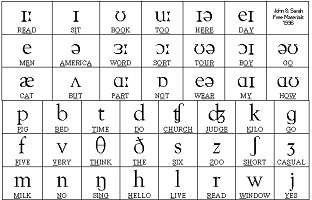Homogeneous diphthong characteristics examples
Homogeneous diphthong
The homogeneous diphthong is one formed by the union of two closed vowels (i, u). In general terms, a diphthong is the combination of two vowel sounds in the same syllable. The order not important, the important thing is that the two vowels are weak. Homogeneous diphthong characteristics examples
It can be any combination of open vowels (a, e, o) with closed vowels (i, u) or only weak vowels, which is the case of the homogeneous diphthong.
At the linguistic level, the problem with this class of diphthongs is to determine which of the two vowel sounds is the nucleus of the syllable, and which is the semiconsonant or semivowel.
This differentiation allows us to establish whether a diphthong is ascending or descending. When it comes to heterogeneous diphthongs, the closed vowel plus open vowel combination is considered ascending.
The combination of descendants is the reverse: open vowel plus closed vowel. Open vowels are always the syllabic nucleus.
Thus, in the above cases, the closed vowels become semi-vowels or semi-consonants. The latter cannot form the nucleus of a syllable because they occur with some obstruction in the vocal tract. But, when it comes to a homogeneous diphthong, it becomes difficult to determine which of the two vowels is the nucleus.
Characteristics of the homogeneous diphthong
Accentuation
The homogeneous diphthong follows the established stress rules. In the case that it corresponds to place a tilde, it must go in the second vowel. Thus, this occurs with acute words ending in vowels or in n / s consonants and esdrújulas.
This homogeneous diphthong is also not spelled accentuated in cases where it is part of grave nouns or adjectives ending in vowels in consonants n / s (for example: gratuitous ).
On some occasions, a homogeneous diphthong gives up its function of limiting syllables. Instead, a hiatus forms. That is, the two weak vowels are separated into two syllables. This change of function can be given for reasons of the geographical or social origin of the speakers.
Thus, for example, the word flow under certain conditions pronounced flow (as diphthong) or flow (as hiatal). However, for the purposes of graphic accentuation , in both cases they are considered to be diphthongs. Homogeneous diphthong characteristics examples
Examples of homogeneous diphthong
Here are some examples of that kind of diphthong:
1. Caring
2. City
3. Caring
4. Neglected
5. Include
6. Inclusive
7. Widow
8. Daytime
9. Flow
10. Ruin
11. Native
12. Citizen
13. Triumph
14. Meddle
15. Bedouin
16. Vulture
17. Nightingale
18. Ruin
19. Diuretic
20. Confluence
homogeneous diphthong characteristics examples

